Crime can occur at any time. Although there are warning signs you may be able to detect, it can be difficult to act quickly enough to prevent forced entry and burglary. And, with about 2.5 million burglaries occurring annually in the US, it’s tough for the authorities to catch perpetrators and respond in time.
It’s essential to always be prepared. When talking about physical security, everything from locks and security cameras to alarm systems can help. Oftentimes, these approaches can be cumbersome to set up, maintain, and monitor. This is where DoorJammer comes into the picture – an incredibly easy-to-set-up, portable security device tailor-made to prevent forced entry, turning every door into a robust physical barrier between you and criminals.
What’s the best way to prevent forced entry? Securing your doors with DoorJammer is essential, but there’s so much more that can be done to ensure complete peace of mind.
In this piece, we’ll take a deep dive and discuss 24 ways to prevent forced entry and theft from occurring at home, office, or school, and see how DoorJammer can help out in each scenario.

Understanding Forced Entry And Theft
Forced entry refers to the act of breaking into a premise or property by using force. It is a common technique used by thieves and intruders who want to gain unauthorized access to homes, schools, and offices to steal valuable items. Using force could involve breaking windows, picking locks, prying open doors, or breaking down doors. Unfortunately, forced entry and theft are becoming increasingly common today.
According to statistics, forced entry and theft are significant problems in many communities worldwide. In the United States alone, a break-in occurs every 26 seconds, with residential areas being the most common targets. Homes, schools, and offices are high-risk areas since they usually have valuable items that attract burglars, including computers, electronics, cash, jewelry, and other expensive items.
Forced entry and theft have a significant impact on both the psychological and financial well-being of the victims. For victims, it’s common to feel violated, depressed, and anxious, not to mention the financial impact can be severe, with the cost of replacing stolen items, repairing any damage caused, and upgrading security measures to prevent future incidents being relatively high.
The only way to stop the criminals is to devise a security plan and employ effective measures, which would directly correspond to potential hazards all types of properties face.
Preventing Forced Entry And Theft At Home
According to FBI data from 2019, an estimated 1.1 million burglaries occurred in the United States, with an average loss of $2,661 per incident. The emotional impact of these events is often far more significant, as homeowners lose more than just belongings; they lose their sense of security and peace of mind.
To combat this, you could employ any of the measures listed below and protect yourself and your loved ones.
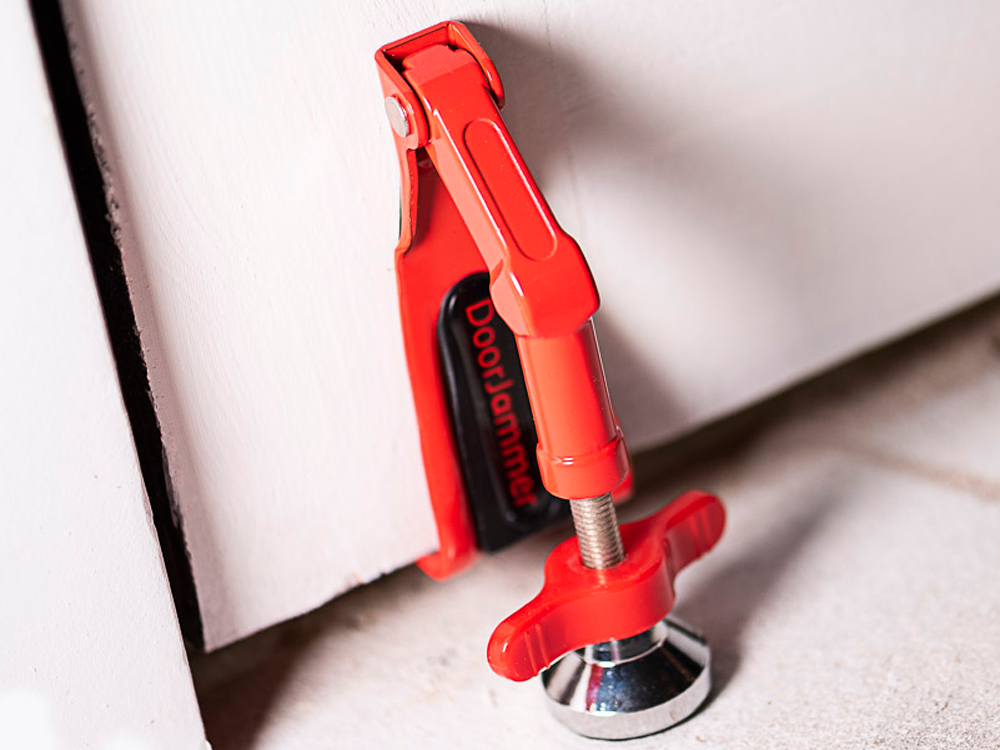
1. Creating A Physical Barrier With DoorJammer
DoorJammer is a portable door security device that significantly enhances the security of almost any door. It is an award-winning and police-accredited tool designed to prevent unwanted forced entry quickly and effectively.
- How It Works: DoorJammer‘s patented steel design allows it to work on almost any in-swinging door without a lock or handle. It’s a simple device that installs by turning a screw, creating a robust barrier that keeps the door securely shut against forced entry.
- Portability: One of the main advantages of DoorJammer is its portability. It is lightweight and compact, making it easy to carry in a bag or pocket. This feature allows homeowners to use it not just on their front doors but anywhere in the home where added security might be required, such as bedroom or home office doors.
- Versatility: DoorJammer is versatile in its use. It’s not just for when you’re away; it’s also great for keeping doors closed or open while at home, adding an extra layer of security. The device can secure doors inside the home, making it a versatile addition to any home security setup.
- User-friendly: DoorJammer is designed to be user-friendly. It comes with an instruction manual, and the installation process is straightforward, requiring no special tools or skills.
- Included in the Box: The DoorJammer comes with a plush carry bag, a foot accessory, a spacer set with four different heights included, and an instruction manual. This comprehensive package ensures you have everything you need to enhance your home’s security.
DoorJammer is an easy-to-use, portable device that can significantly enhance the security of a home, making it a worthy addition to any homeowner’s security toolkit.
2. Installing Window Pin Locks
Window locks can be an overlooked yet crucial element in home security. Many burglars attempt to access a house through windows, as they can be easier to force open than doors. Installing strong, reliable window locks can thus significantly reduce the risk of a break-in.
Statistics show that around 23% of burglars gain entry through a first-floor window. And depending on the household, it can happen extremely quickly, relatively slowly, or not at all if the owners install pin locks.
Specific types of window locks, such as pin locks, are particularly effective. These locks work by drilling a hole and inserting a pin, making the window harder to force open. But if you want air circulation or, simply put, leave windows open during summer, it’s also possible. Simply install a second pin lock, and you should still enjoy the protection such a lock provides.
3. Motion Detector Lighting
Installing motion detector lighting is a practical and effective way to deter potential burglars from your property. These lights turn on automatically when they detect movement, which can startle and deter potential intruders. The sudden illumination can give the impression that someone is home and has turned on the lights due to suspicious activity. It can also draw attention to the area most intruders prefer to avoid.
In addition to their deterrent effect, motion detector lights offer the homeowner practical benefits. They can automatically light up dark areas of your property when you’re moving around outside, increasing safety and convenience.
Motion detector lights are available in various models, including standard hard-wired versions and ones that run on solar power. The solar-powered models can be particularly advantageous if running a power supply would be difficult. Despite the slightly higher cost, they can offer significant savings over time due to their use of solar energy.
Remember, it’s not just about installing these lights but also about strategic placement. Your property’s entrances, pathways, and dark corners are essential to consider. This way, you can maximize the deterrent effect while improving your property’s visibility and safety.
4. Door And Window Alarms
Door and window alarms act as an added layer of protection to the physical locks in your home. They emit a loud noise when doors or windows are opened, which can effectively scare away potential intruders trying to enter your home. The loud noise of the alarm not only startles the intruder but also alerts you or potentially your neighbors, increasing the chances that the police will promptly receive a notification.
Importantly, these alarms are typically wireless and battery-operated, making them easy to install without professional help or extensive wiring. It also allows them to be versatile and placed in various locations throughout your home, including upper floors and other areas that intruders might target.
While these alarms don’t provide the same comprehensive security as a professionally installed and monitored system, they are a simple, cost-effective solution for enhancing your home’s security. They can be particularly beneficial for those on a budget or renters who cannot install a more complex security system.
Moreover, the mere presence of an alarm system can act as a deterrent in itself. Most burglars prefer to target homes with the least risk of getting caught, so knowing that a home has alarms on doors and windows may make them think twice before attempting a break-in.

5. Neighborhood Watch
A Neighborhood Watch program can prevent forced entry and theft in your home. This program involves residents of a neighborhood coming together to keep an eye on each other’s properties, reporting any suspicious activities to law enforcement, and generally working together to ensure the safety and security of their community.
One of the primary advantages of a Neighborhood Watch program is that it increases the number of eyes and ears that can detect and report suspicious activity. It creates a heightened vigilance in the neighborhood, which can deter potential burglars. Knowing that a neighborhood is actively monitored by its residents can make it a less attractive target for criminals.
Beyond its deterrent effect, a Neighborhood Watch program also fosters a strong sense of community. It brings neighbors together, encouraging them to look out for one another and promoting a greater sense of responsibility for each other’s safety. It can contribute to a more cohesive and safer neighborhood environment overall.
Participating in a Neighborhood Watch program also teaches residents about home security and crime prevention. Many police departments offer resources and training to Neighborhood Watch groups, helping residents better understand how to protect their homes and what to look out for when monitoring their neighborhoods.
6. Secure Sheds And Outbuildings
Securing sheds and outbuildings is a crucial component of a comprehensive home security strategy. Sheds, garages, and other outbuildings often house valuable items such as bicycles, tools, and gardening equipment, making them attractive targets for thieves. In addition, they can sometimes provide easy access to the main home if they need to be appropriately secured, further increasing the risk of a break-in.
First, it’s essential to ensure that all outbuildings have solid and durable doors with high-quality locks. Like your main home, the doors should be solid and robust, and the locks should be reliable and tamper-resistant. If the doors are weak or the locks fragile, the building can be a simple target for burglars.
Burglars can often gain entry by breaking a window, so consider using reinforced glass or polycarbonate for windows or, at the very least, adding security bars or grilles. Window locks, especially the pin locks discussed above, are also valuable, making it harder for an intruder to force a window open.
Lastly, marking valuable items stored in outbuildings with your postcode or another identifiable mark is wise. It can help police to identify and return your property if it’s stolen. Consider keeping a record of serial numbers for expensive items and photographs.
7. Reinforce Your Entry Door Strike Plate
The strike plate is the metal piece where the door latch engages with the frame. In many homes, this component is often a weak point in the door’s security as it’s typically installed with short screws and thin metal, making it relatively easy for a determined intruder to kick in the door.
By reinforcing the strike plate, you’re making it much harder for burglars to force their way into your home. It involves replacing the standard strike plate with a high-security version made from heavy-duty steel and installed with long, 3-inch screws. These longer screws reach deep into the door frame, anchoring the strike plate to the studs behind it, significantly increasing its resistance to force.
While it may seem like a minor upgrade, reinforcing your strike plate can substantially impact your door’s overall strength, doors with reinforced strike plates can withstand a great deal more force, making it much harder for an intruder to kick in the door or force it open with a tool like a crowbar.
It’s worth noting that reinforcing your strike plate is most effective in conjunction with other door security improvements. For example, installing a deadbolt lock, which extends deeper into the door frame, will further enhance your door’s resistance to forced entry—similarly, upgrading the door to a solid wood or metal model if it’s currently hollow or made from a weaker material.
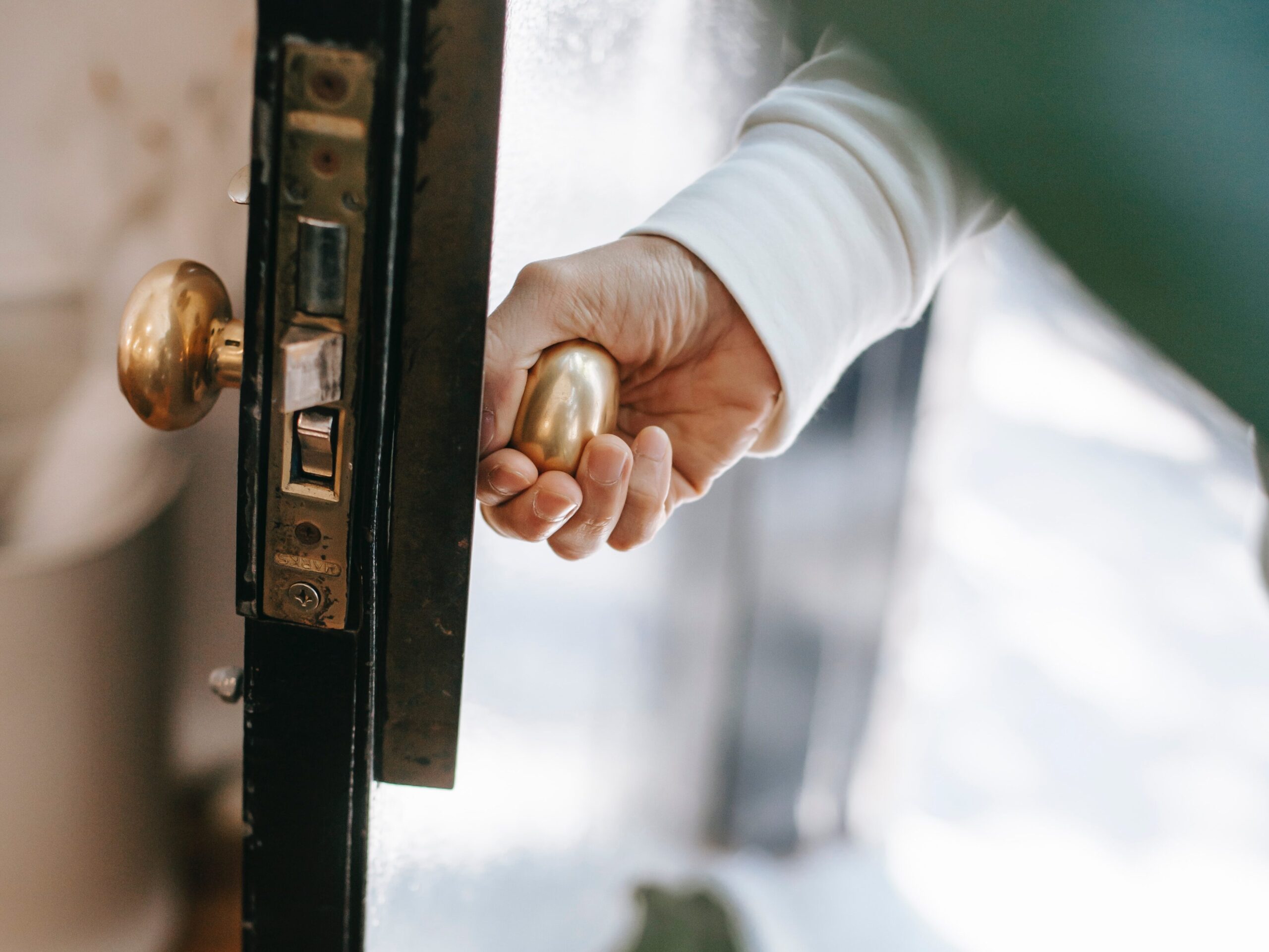
8. Secure Your Locks
Securing the locks on your doors and windows is fundamental in preventing forced entry and theft at your home. After all, locks are the primary mechanism between a potential intruder and access to your home. Therefore, ensuring they are robust, reliable, and appropriately installed can significantly enhance your home’s security.
Firstly, it’s essential to understand the types of locks you have and their vulnerabilities. Traditional door locks, for example, may be susceptible to picking or bumping, which are techniques burglars use to unlock doors without the correct key. To counter this, consider upgrading to high-security locks resistant to these methods. These locks typically have complex keyways and pin configurations that make them difficult to pick.
Deadbolts are another essential element of a secure home. Unlike a spring-latch lock, which easily opens with a credit card or other thin piece of plastic, deadbolts must be manually moved to the open position, which makes them more resistant to forced entry. A single-cylinder deadbolt, operated by a twist knob on the inside and a key on the outside, is a common choice for many homes.
Preventing Forced Entry And Theft At School
Schools are not immune to theft and forced entry. It amounts to millions of dollars worth of stolen property each year. A significant portion of these thefts involve students stealing from their fellow students. Schools can take various measures to prevent forced entry and theft to ensure a safe learning environment.
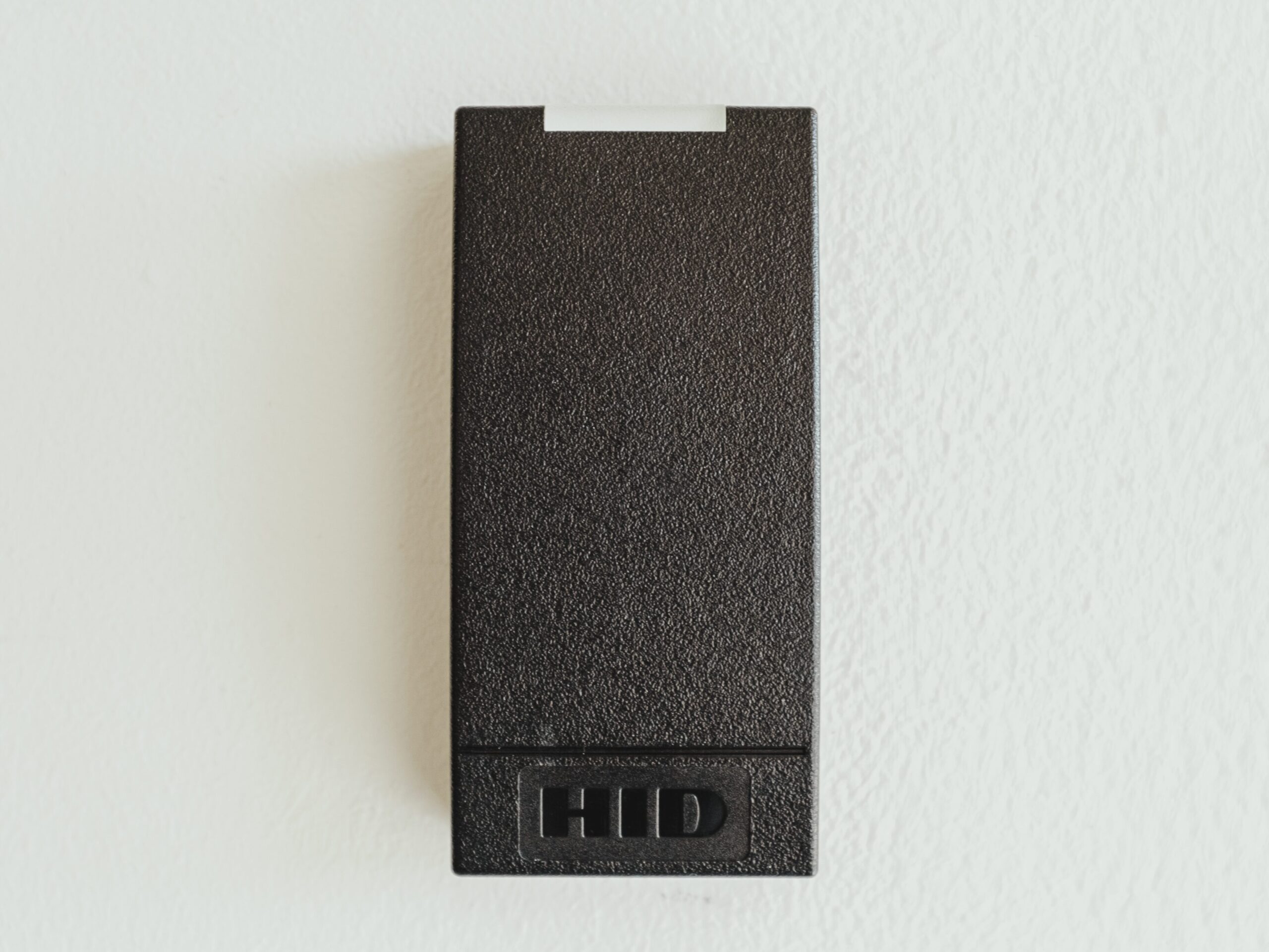
9. Controlled Access
A controlled access system often begins with a secure perimeter. It refers to restricting and monitoring a school’s entry and exit points to ensure that only authorized individuals can gain access. It includes secure fencing, locked doors, and monitored gates. The aim is to funnel all visitors through a limited number of entry points where they can be observed and identified.
Once inside the perimeter, additional layers of controlled access come into play. These might include locked internal doors that require a passcode or access card, reception areas where visitors must sign in and out, and turnstiles or security gates.
These controlled access systems allow school staff to always know who is in the building and prevent unauthorized entry, a standard theft method. It also ensures that if a theft does occur, there’s a better chance of identifying the culprit. They also reduce the chance of schools being targeted by culprits, contributing to a more productive learning environment.
10. Visitor Management
A well-structured visitor management system helps regulate and monitor all individuals who are not regular school staff or student body members. Traditionally, schools have used simple sign-in sheets or badges to track visitors. However, modern technology allows the employment of digital check-in processes, photo ID scanning, and even instant background checks.
Such systems ensure that every visitor is accounted for while deterring potential thieves. They provide comprehensive data, assess security effectiveness, and identify areas of improvement to keep the children, teachers, and school staff safe.
11. Lockers And Personal Item Security
Lockers and personal item security are areas of concern often overlooked when discussing school security measures. However, it is a critical component in the broader effort to prevent theft and maintain a safe and secure student environment.
School theft involves personal belongings, such as backpacks, electronic devices, and other valuable items. These are often stored in lockers, which makes them a common target for thieves. Therefore, providing secure lockers for students to store their belongings is critical to reducing theft.
Modern lockers, like those provided by Scranton Products, are designed to offer high levels of security. They can have advanced locking mechanisms that resist tampering and forced entry. Furthermore, using durable materials in their construction can add another layer of protection against break-ins.
However, securing lockers is only one part of the equation. It’s also vital to instill in students the importance of securing their belongings. It can involve educating them about not sharing their locker combinations, ensuring they are correctly closed and locked, and not leaving valuable items unattended.
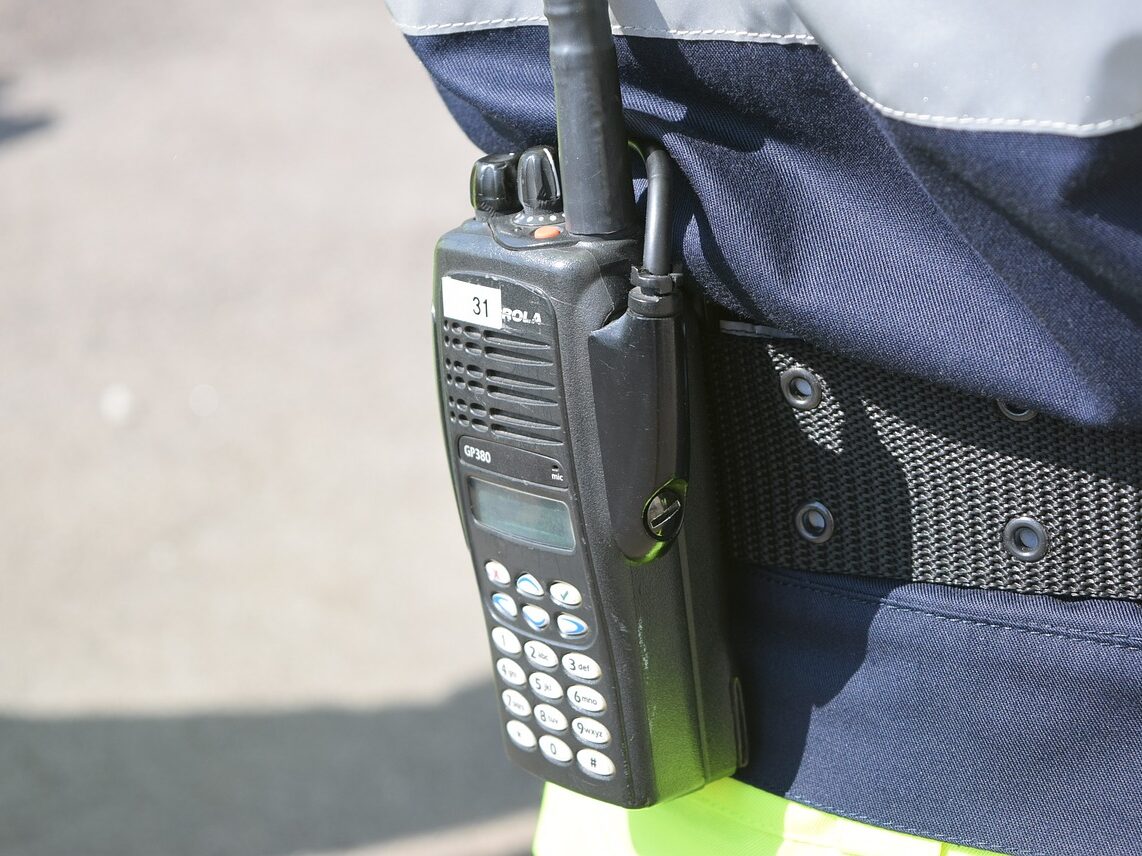
12. Security Personnel
Professional security officers have the training to respond to a variety of situations. Their expertise includes identifying suspicious behavior, intervening in potential security incidents, and appropriately handling criminal activity until law enforcement arrives. They are also typically trained in first aid and emergency response procedures, adding an extra layer of safety for the school community.
Beyond the immediate security benefits, the presence of security personnel can also contribute to the overall sense of safety within the school. Knowing that trained professionals are on hand to respond to security concerns can provide students, staff, and parents peace of mind. It can help create a more conducive environment for learning and teaching.
Security personnel can also be instrumental in establishing and enforcing the school’s safety policies. They can help ensure that everyone entering the school building is authorized to control access to certain areas and monitor the grounds for potential security threats.
However, it’s essential to balance the presence of security personnel with a welcoming and inclusive school environment. Schools should strive to integrate security personnel into the school community, where they are not seen as intimidating figures but as approachable and supportive team members dedicated to everyone’s safety.
13. Secure Patio Doors
In the context of schools, securing patio doors—or any doors, for that matter—requires a different approach compared to a residential setting. It’s critical to balance the need for security against possible threats with the equally important need for safety during emergencies, such as fires or earthquakes, where quick evacuation is necessary.
In a school environment, doors, including patio doors, should be capable of controlling entry yet provide easy egress access in emergencies. For example, the International Building Code stipulates that public doors, including those in schools, should open outward, allowing anyone to exit a room quickly by pushing through the doors. This approach negates the need to fumble with knobs or locks, which can hinder a rapid evacuation.
In terms of security, classroom doors, which could include patio doors if they open directly into a classroom, should have outside locks. This arrangement means that when the door is locked, no one can enter the classroom, but anyone inside can exit without needing a key. Other door locks permitted in schools are electronically-controlled keyless ones, usually managed from the school’s reception or security rooms. School staff can operate these by using push-button codes, proximity cards, or biometric readers.
14. Security Lighting
School campuses are typically large, with numerous buildings, walkways, parking areas, and other outdoor spaces. Implementing a well-thought-out security lighting plan that covers all these areas is vital. Permanent or continuous lighting should illuminate high-traffic areas and critical points such as entrances, exits, and parking lots, ensuring these areas are always well-lit.
Motion sensor lighting can also benefit less-trafficked school campus areas, such as the perimeters, back entrances, or storage areas. But, above all, placement and design should also come into consideration to minimize shadowy areas where intruders could hide. Overly bright lights can create harsh shadows and contribute to light pollution, so a balance is necessary. Shielded, downward-facing lights can reduce these issues while still providing adequate illumination.
Aside from the physical deterrent that security lighting provides, it also significantly supports other security measures. For instance, surveillance cameras can function more effectively with good lighting conditions, capturing clearer images and providing better monitoring capabilities. Security personnel can also perform their duties more effectively, observing and responding to suspicious activities more efficiently.
15. Surveillance Cameras
School surveillance cameras are crucial to a comprehensive security strategy to prevent forced entry and theft. These cameras serve multiple purposes – they help monitor the premises, can deter would-be intruders, and provide valuable evidence in case of an incident.
A school campus typically consists of several areas that need monitoring, such as entrances, hallways, classrooms, playgrounds, and parking lots. Surveillance cameras strategically installed in these locations can provide comprehensive coverage, helping to identify any suspicious activity.
The visibility of cameras can act as a deterrent to potential intruders. The mere presence of surveillance equipment often indicates that security measures are in place, making the school a less attractive target. However, the cameras should be positioned to be noticeable but not easily tampered with or disabled.
Despite the numerous advantages, such school cameras also raise privacy concerns. The school administration must ensure ethical use, respecting the privacy rights of students and staff and placing them only in public areas where there’s a legitimate need for surveillance.
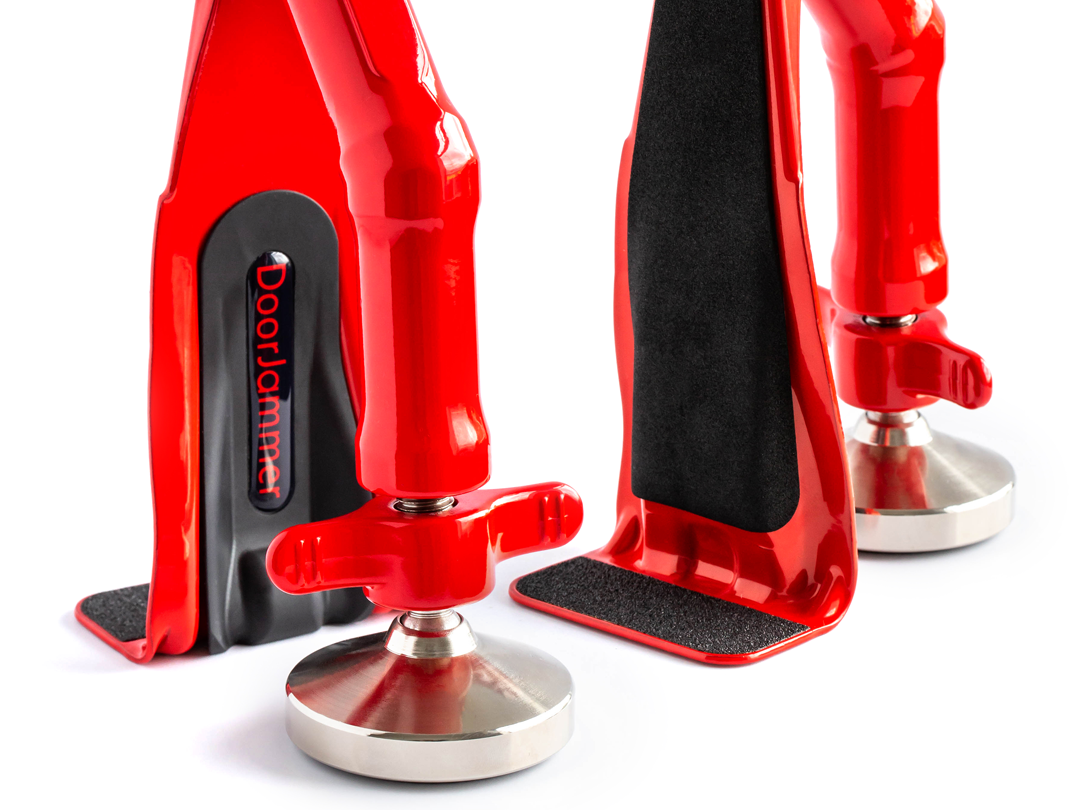
16. Use of DoorJammer In Classrooms And Dorms
Another consideration is creating physical barriers between the security threat and students. Even though forced entry and theft usually go hand in hand, it’s not for criminals to induce bodily harm to get what they want, which may only escalate the situation and lead to unfortunate fatalities.
Precisely for this reason, DoorJammer could also help in ensuring safety. The device is easy-to-use with two versions available, DoorJammer and DoorJammer Lockdown. It is sturdy and robust enough to withstand 1000 pounds of direct force without tripping over any surface.
In a classroom context, a DoorJammer can provide an additional layer of security during lockdown situations. Teachers can quickly install the DoorJammer to prevent the door from being opened from the outside, providing an extra barrier between students and potential threats.
For dorm rooms, where students store their personal belongings and need privacy, DoorJammer can offer enhanced protection. Students can use them as an additional security measure, especially when they may be away from their rooms, such as during classes or overnight trips.
DoorJammer can also be helpful in other school areas, such as staff rooms, offices, or storage rooms, where sensitive information or valuable equipment might be kept. By providing a fast and effective way to secure these rooms, DoorJammer can easily prevent theft and unauthorized access.
Preventing Forced Entry And Theft At Office
Just like schools, offices are also potential targets for criminals, considering the valuable equipment inside. Nowadays, the risk of cybercrime is higher at the office. Still, it doesn’t mean measures put in place shouldn’t extend to physical security due to access to sensitive information stored on paper or the devices themselves.
In other words, it’s best to ensure complete protection by combining both digital and physical methods, and for these purposes, you can do any of the following.
17. Access Control Systems
The importance of access control systems in an office environment can’t be overstated. These systems provide high security by ensuring that only authorized individuals can enter the premises. They do this by using electronic locks, keycards, or biometric data to control who has access to different parts of the office.
An access control system protects against external threats and helps prevent internal theft and unauthorized access to sensitive areas. For example, when only a few employees have access cards to certain rooms containing valuable equipment or sensitive data. The system can also keep a log of who entered and exited the area and at what time, providing a clear audit trail in case of any security breaches.
Furthermore, access control systems can be integrated with other security measures, such as security cameras and alarm systems, to provide comprehensive security coverage. In the event of a forced entry attempt, the system can trigger an alarm or notify security personnel, enabling a rapid response.
An effective access control system is critical to any office’s security plan in an era of data breaches and corporate espionage. It helps prevent theft and unauthorized access and enhances overall operational efficiency by managing access rights for different employees.
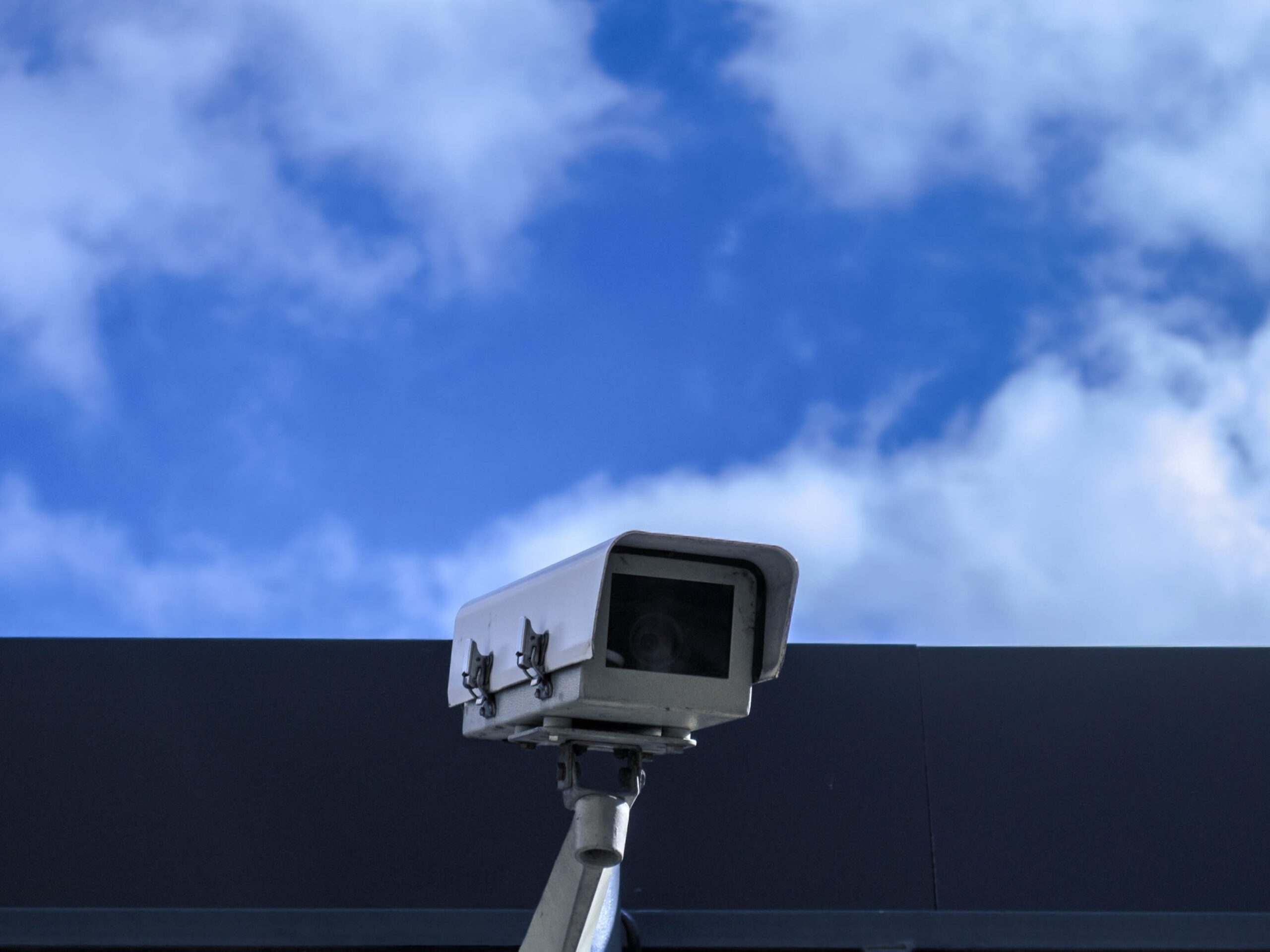
18. Surveillance Cameras
Surveillance cameras around an office can capture footage of all activities in real-time. This continual monitoring can discourage potential thieves, who know their nefarious deeds will be on tape. In the event of a theft or forced entry, the footage can provide crucial evidence to help identify the perpetrators and assist in their prosecution.
Moreover, surveillance cameras can also be used to monitor the activities of employees and visitors within the office, ensuring adherence to company policies and procedures. They can help identify any suspicious behavior, potentially preventing a security incident before it occurs.
Many modern surveillance systems also incorporate features such as remote viewing, enabling authorized personnel to monitor the office environment from anywhere, at any time. This feature is handy for after-hours security when the office is most vulnerable to forced entry and theft.
19. Use High-Security Locks
Using high-security locks is crucial in preventing forced entry and theft in an office. Such locks can resist physical attacks and lock-picking attempts better than standard locks. They usually have more robust and complex internal mechanisms and often require specialized keys that can’t be easily duplicated. This makes it much more difficult for unauthorized individuals to gain access.
High-security locks should go on all exterior doors and sensitive interior areas such as server rooms or offices with sensitive or confidential information. These locks can be a strong deterrent against theft and forced entry. They can also increase productivity, as employees can focus on their work without worrying about security issues.
20. Install Motion Detector Lighting
As mentioned multiple times, motion detector lighting effectively prevents forced entry and theft. The only difference between the two previous scenarios is that you should pick a more sophisticated system and differentiate between their types.
The two main types of motion detectors are passive infrared (PIR) and ultrasonic. PIR sensors detect the heat emitted by the human body, making them practical for outdoor use, where detecting temperature differences is crucial. Ultrasonic sensors, on the other hand, send out sound waves and measure the reflection to detect movement, making them more suited for indoor use.
The installation involves mounting the sensor and light fixtures, connecting the system to your office’s power supply, and configuring the system settings. Positioning the sensor in an area that covers the spaces you want to monitor, such as entrances, windows, and other potential access points, is vital. After the installation, you should test the system to ensure it’s functioning correctly.

21. Ventilation Security
Ventilation security is critical to securing an office against forced entry and theft. While HVAC systems and ventilation ducts are essential for maintaining a healthy and comfortable working environment, they can also serve as potential entry points for burglars if not correctly secured.
When considering ventilation security, consider all potential access points, including rooftop units, ground-level vents, and even large air conditioning units with ducts that lead into the building. Some burglars go as far as to dismantle AC units or crawl through unsecured ducts to gain access to a building, which makes it necessary to review all such systems for potential vulnerabilities.
The first step in ensuring ventilation security is thoroughly inspecting all HVAC systems and ducts from the outside and the inside of the office building. The aim is to identify any ducts or vents that are large enough for a person to fit through and to determine whether these potential entry points are accessible and not appropriately secured.
After you identify the vulnerability, implementing correct measures is all that matters. One standard method is installing sturdy grilles or bars inside or outside of vents and ducts. These allow air to flow freely while preventing unauthorized access. It’s vital to ensure that these grilles are made from robust, durable material and securely fastened to prevent them from being easily removed or tampered with.
In addition to physical barriers, alarms could also come into play here. For instance, some companies install motion detectors or contact sensors in or near vents and ducts. If an intruder attempts to enter through a vent, the sensor will trigger an alarm, alerting security personnel or local law enforcement.
22. Secure Sensitive Information
Securing sensitive information is a paramount concern for any office environment. Data loss or unauthorized access can have severe consequences, from damaging a company’s reputation to financial losses and even legal implications.
Sensitive information includes personal data of employees and clients, financial records, business strategies, and proprietary technologies or processes. Ensuring its protection is of paramount importance.
A standard method of securing sensitive information is through encrypted databases and secure servers. Encryption transforms data into a code that can only be accessed by those who possess the encryption key. It ensures that even if a data breach occurs, the stolen information remains unreadable and useless to the thief.
Additionally, implementing strong password policies is another effective measure. Employees should be encouraged to use complex passwords and change them regularly. Two-factor or multi-factor authentication, which requires more than one verification method to access data, can provide an added layer of security.
When it comes to physical security, it’s best to ensure all files are in lockable cabinets and are put through shredders or otherwise securely disposed of. Employee training is also a crucial component of securing sensitive information. Employees must understand the importance of information security and be aware of a data breach’s potential risks and consequences. Regular training ensures that employees are up-to-date on the latest security protocols and know how to identify and report potential security threats.
23. Security Training For Employees
Investing in employee security training is integral to any effective office security strategy. In the digital age, threats have evolved beyond physical intrusion, encompassing cyber threats like phishing, malware, and data breaches. Every team member must understand their role in maintaining a secure environment and fulfill it accordingly during forced entry scenarios.
Security training should cover a wide range of topics, including the importance of creating strong, unique passwords and understanding the need to change them regularly. Training should also educate employees about phishing scams and how to identify suspicious emails, links, or requests for information. This training is vital as phishing scams have become more sophisticated and are one of the most common initiators of cyber attacks.
Additionally, it’s essential that security training isn’t just a one-time event. Regular refreshers and updates are necessary to keep staff up-to-date with the latest threats and security protocols. The rapidly changing nature of technology and cybersecurity means new threats can emerge at any time, and employees must be prepared to respond appropriately.
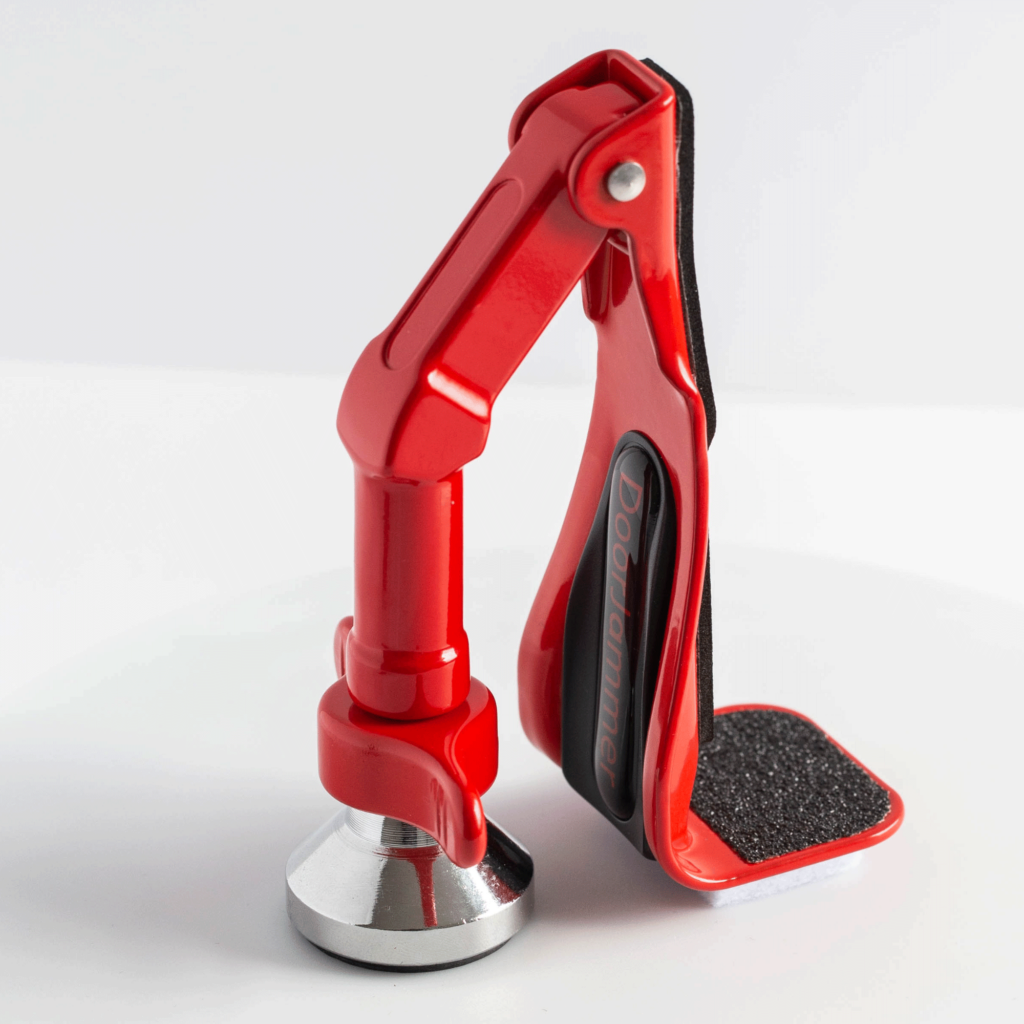
24. Use Of DoorJammer In Office Spaces
But what’s to say DoorJammer can’t also play its part in securing the office space? Being versatile and coming in two distinct versions, it can easily deter thieves. For instance, it can help ensure meeting privacy and security in private offices or conference rooms. The device can also be beneficial in securing doors in sensitive office areas, like server rooms or record storage areas, that house essential and confidential information.
The portability of DoorJammer also makes it a valuable tool for employees who travel for work. It can be easily packed in a bag or suitcase and used in hotel rooms or other temporary accommodations, providing peace of mind for the employee while they are away from home.
In addition, DoorJammer is straightforward to use, requiring no special training or tools. This ease of use, combined with its effectiveness and versatility, makes DoorJammer a valuable addition to any office’s security measures.
Conclusion
Forced entry and theft are serious threats that can cause significant financial losses and emotional distress and compromise sensitive information. Fortunately, there are several effective practices that you can adopt to prevent forced entry and theft at home, office, and school.
Anything from standard to more high-tech measures can help ensure your security in a forced entry scenario. However, to ensure your security, it’s best to employ multiple methods that will address a variety of challenges and will deter, slow down or help prevent theft.
That’s precisely why DoorJammer, a versatile and portable tool providing a robust physical barrier, can easily go hand in hand with any security measure. The classic DoorJammer model withstands up to 1000 pounds of direct force, doesn’t trip over any surface, and is extremely simple to install. But if you desire even more protection, go for DoorJammer Lockdown, which is sturdier but doesn’t compromise on versatility or ease of usage, despite the slightly larger size.